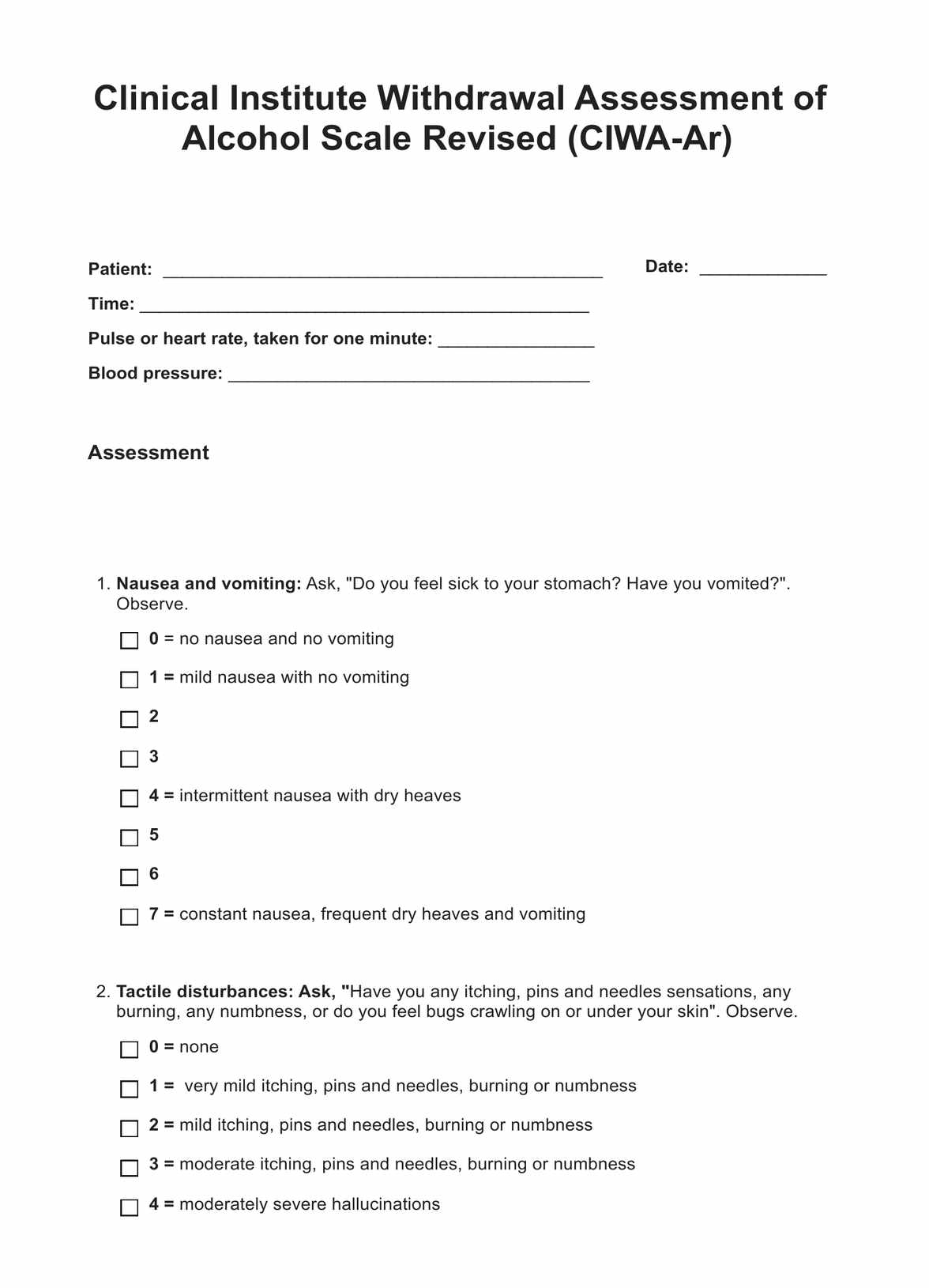Approximately 5 minutes.

CIWA-AR Scale
Use the CIWA-Ar Scale to assess the level of alcohol withdrawal in patients. It is free to download and comes with a CIWA-B Scale as an added bonus.
CIWA-AR Scale Template
Commonly asked questions
The scale mentions that patients who score below 10 don’t usually need additional medication. If they score higher, you might want to provide additional medication based on the overall score and the symptoms' high rating.
No. Only professionals should use this because they will know what they need to observe while administering the scale. If you need to get checked or know someone going through alcohol withdrawal, please contact a healthcare professional.
EHR and practice management software
Get started for free
*No credit card required
Free
$0/usd
Unlimited clients
Telehealth
1GB of storage
Client portal text
Automated billing and online payments











